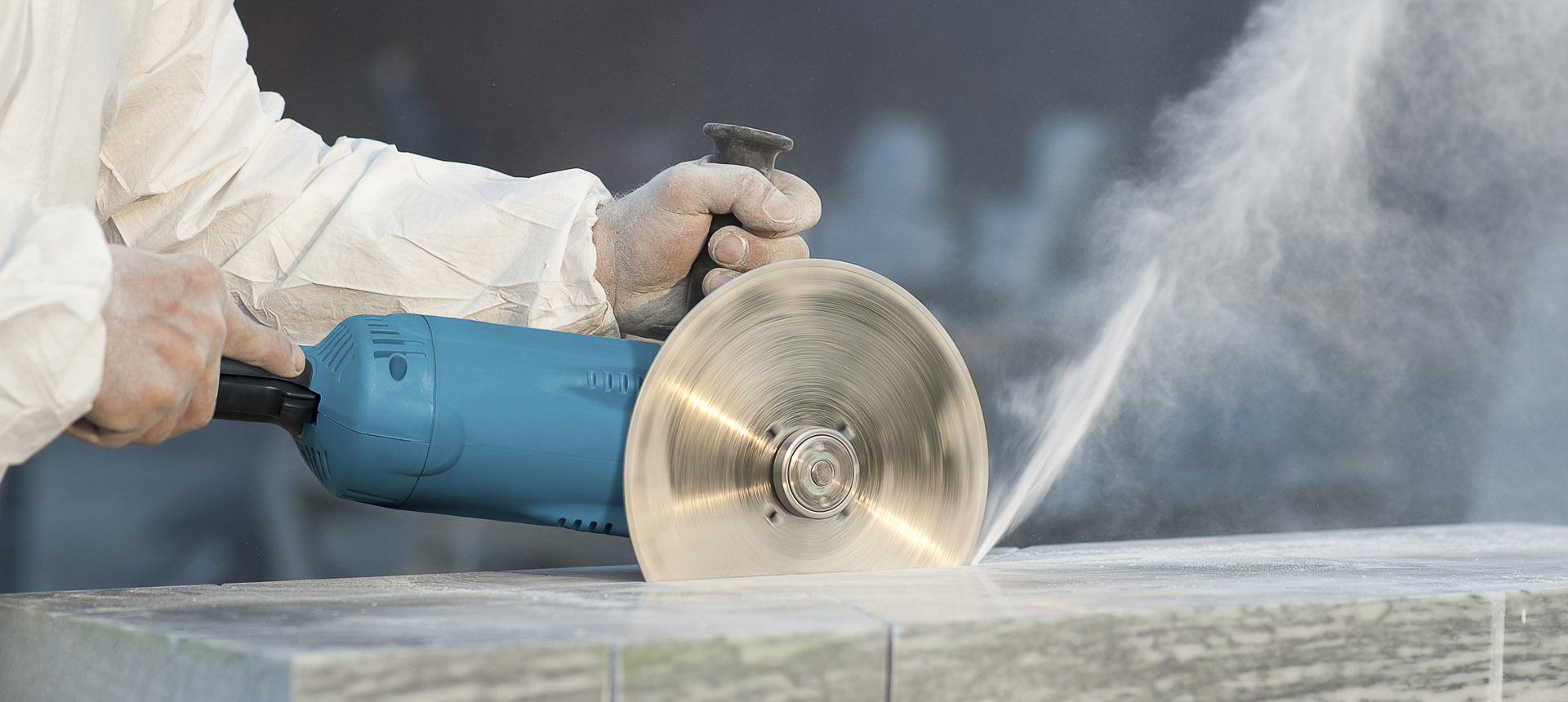
Safety First: Silica Dust
Quartz is a hard, crystalline mineral and the most abundant mineral found in the surface of the earth. It is present in some stone, rock, sand, gravel and clay.
Flattening the Curve
When broken, the quartz mineral releases crystalline silica dust particles that are small enough to be breathed into our lungs. Here they become lodged, in a similar way as asbestos fibres, potentially causing lung cancer, silicosis (irreversible scarring and stiffening of the lungs) and kidney disease.
Each year in Australia, the number of cases attributed to past exposure to respirable crystalline silica continues to increase. To try to reduce the number of people impacted by silica dust diseases, the workplace exposure standard (WES) will drop from 0.1 to 0.05 mg/m3 as of 1 July 2020.
Activities at Risk
Activities at higher risk of releasing silica dust into the air include:
- fabrication, installation, maintenance and removal of engineered stone countertops
- mining, quarrying and mineral ore treating processes
- road construction and tunnelling
- brick, concrete or stone cutting; especially using dry methods
- excavation, earth moving and drilling plant operations
- construction labouring and demolition.
There is no such thing as good dust. Respiratory protective equipment (RPE) is not the answer. We need to focus on solutions to control dust at the source. Nigel Johnson, President, Asbestos and Hazardous Materials Consultants Association
Compliance Benchmarking
Being heavily regulated, parts of the mining industry are already familiar with routine exposure monitoring, mandatory wearing of respiratory protection equipment, dust extraction systems and investment into new technologies.
Whilst the mining industry faces some big challenges to minimise the release of dust, the gap to compliance is much larger in the manufacturing, construction and demolition industries.
Understanding Exposure
Many industries will see the introduction of mandatory respiratory protection equipment, as the outcomes of reviewing safety data sheets (SDS) and geotechnical reports for silica composition and exposure monitoring identify vast exceedances of the WES.
If this topic is new to you, Blend ESQ recommends reading the NSW Resources Regulator guide ‘Dust safety in the metals and extractive industries’ 2nd edition guide prepared in March 2020, or make use of the NSW Resources and Geoscience ‘Dust Toolkit‘ launched in July 2020.
Crystalline silica is just one of many carcinogens present in dust. If you work on the basis that ‘no dust’ is ‘good dust’ – then industry will need to continue to invest in solutions and technologies that focus on eliminating dust generation and improving dust extraction at the source.
There are already many solutions available in dust suppression and extractions systems, negative pressure enclosures for high risk activities, covered conveyors and trucks and HEPA filtered cabins. See some construction industry solutions at Husqvarna and Hilti.
An cross-disciplinary approach will continue to be required so that solutions do not simply disperse the dust issue to neighbouring properties, and do not result in water quality decline due to wastewater generated by dust controls.
Common Myth- cabins on machinery protect workers from respirable dust
If fine dust is still depositing inside the cabin, workers are likely being exposed.
To reduce exposure inside a cabin:
– filter fresh air intake through a HEPA filter
– seal the cabin to prevent ingress of fine dust
– keep the cabin clean inside
– regular maintenance
– confirm control effectiveness with exposure monitoring
See more here from Breathe-safe.
Demonstrated Improvements- Sandstone Crushing Process
Property Risk Australia (PRA) recently collaborated with Theos Bros Australia to reduce exposure to respirable crystalline silica during sandstone crushing at a Barangaroo construction site in Sydney city.
Improvements to the process included enclosing the conveyor belt and installing a localised exhaust.
Real-time monitoring demonstrated a significant reduction in airborne crystalline silica fibres.
For more information contact PRA.

